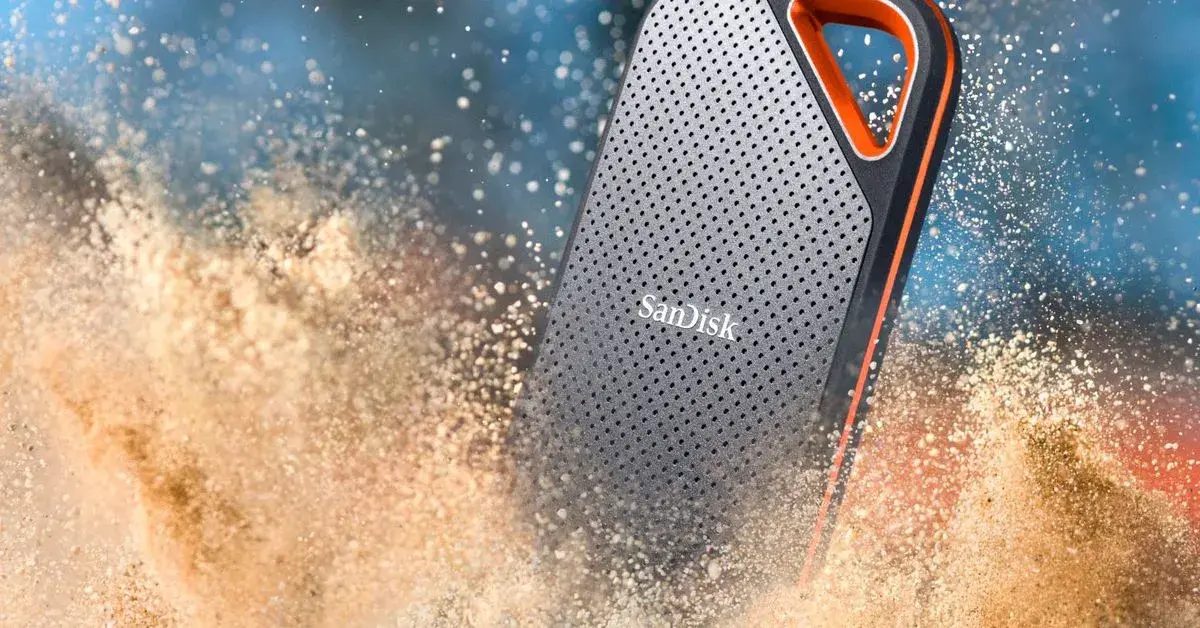I get a lot of folks are correctly pointing out the need to back up data but isn’t that a little bit of victim blaming? This isn’t a situation where the guy had a 10 year old drive with all his photos and videos sitting around unbacked up. He had a new drive and it failed. Can we agree that brand new drives aren’t supposed to fail?
Can we agree that brand new drives aren’t supposed to fail?
No.
The typical failure rates, for pretty much all electronics, even mechanic stuff, form a “bathtub graph”: relatively many early failures, very few failures for a long time, with a final increasing number of failures tending to a 100%.
That’s why you’re supposed to have a “burn in” period for everything, before you can trust it within some probably (still make backups), and beware of it reaching end of life (make sure the backups actually work).
That’s absolutely true in the physical sense, but in the “commercial”/practical sense, most respectable companies’ QA process would shave off a large part of that first bathtub slope through testing and good quality practices. Not everything off of the assembly line is meant to make it into a boxed up product.
Apparently even respectable companies are finding out that it’s cheaper to skimp on QA and just ship a replacement item when a customer complains. Particularly when it’s small items that aren’t too expensive to ship, but some are doing it even with full blown HDDs.
In this case, I think we can remove what’s left of the benefit of the doubt from Western Digital (who owns SanDisk). They are as scammy/shady as I know a company to be.
Personally I’ve been boycotting them since 2016 after I couldn’t recover the data from an external drive, which WD encrypted without warning nor consent. A faulty component on the PCB (unrelated to the drive itself), combined with WD’s non standard practices (non SATA pins + mandated proprietary encryption) meant that I had to lose this drive and the data it contained so they could make a quick buck. I can’t trust a company with such ethics to store anything for me.
In 2020, they got themselves into another scandal. WD reds, which were advertised as pro/NAS storage, and sold at a premium, were found to behave like shingled drives (a technique that trades away some reliably and availability in exchange for extra storage density), exposing many users to heightened risk of critical failure (esp. during disks swaps). WD of course denied, and then again when confronted with evidence, up until the internet burst in flames. Again consumer hostile practices.
Here we have SSDs which have been reported for months, and by several reputable sources, to be having problems, which SanDisk even attempted to patch without success. And now, wouldn’t you think that they are trying to recall them all in order to protect consumers from likely data loss (like any responsible data storage provider would do)? Nope. They are currently trying to sell those at significant discount, as quickly as they can, hurting plenty of consumers in the process is less important than their short term financials.
As far as I can care, they can go to hell, bankruptcy is all they deserve, for the greater good.
Indeed. An old EE mentor told me once that most component aging takes place the first two weeks of operation. If it operates for two weeks, it will probably operate for a long, long time after that. When you’re burning in a piece of gear, it helps the testing process if you put it in a high temperature environment as well (within reason) to place more stress on the components.
The high temperature part is kind of a trap with SSDs: flash memory is easier to write (less likely to error out) at temperatures above 50C, so if you run a write heavy application at higher temperature, it’s less likely to fail than if it was kept colder.
Properly stress testing an SSD would be writing to it while cold (below 20C) and checking read errors while hot (above 60C).
For normal use you’d want the opposite: write hot, read cold.
They should at least try to recover the data. Maybe a data recovery program like spinrite would just do it. https://www.grc.com/sr/spinrite.htm .
Not running raid, not backing up, and not even trying the simplest recovery approaches is just sloppy and lazy. Do at least one of the three.
Like someone else said. Expect the biggest risk of failure when you buy it. Then like maybe 5 years out rising failure rates. Refreshing the disk pattern as it gets older can help too.
All of this skills the point. This is a second drive that failed, it was the replacement for an earlier drive that failed.
That’s what the article is all about.
A high, unexpected and unreasonable failure rate.
I had a high failure rate in some Seagate drives in the early 00s. Switch vendors and never had the problem again.
We also do no know how they failed. Are they still image readable with ddrescue or spinrite for example or are they truly crashed. It is not clear if they even tried.
The article alludes to this problem, but Amazon has basically forfeited the consumer goodwill they used to have. It used to be that their reviews were trustworthy (and relatively hard to game), and ordering products “sold by Amazon” was a guarantee that there wouldn’t be counterfeits intermingled in. Plus they had a great return policy, even without physical presence in most places.
Now they don’t police fake reviews, and do a bad job of the “SEO” of which reviews are actually the most helpful, they’re susceptible to commingling of counterfeit goods (especially electronics and storage media), and their return policy has gotten worse.
It basically makes it so that they’re no longer a good retailer for electronics, and it’s worth going into a physical store to avoid doing business with them.
deleted by creator
It’s basically just a really elaborate angry comment on a SanDisk SSD. Sucks that you lots your data, but it’s a single failure that could happen to basically any drive. Back up what you care about. Absolute waste of time ‘article.’
It’s two failures in a row on a drive that had a known firmware issue that had supposedly been fixed. Given the other reports floating around about this model it seems there could actually be a problem. But to know for sure we’d need statistics which we don’t have.
The Verge is a hit or miss outfit for me. Sometimes they’re fine, but then you remember when they tried to build a PC and you wonder if they really actually know what they’re doing over there.
deleted by creator
Apparently they gave that guy (who had never built a PC on camera before) like less than a week to put that video together. Should it have gone out? No, but it’s not the guy in the video’s fault. Source: https://youtu.be/QKzmYsySGFQ
Oh I’m not throwing shade at Stefan, but the entire organization. A product like that doesn’t happen because of one journalist, it happens because upper management constantly undervalues the time and effort it takes to put it together.
SSDs are nice and fast but if the data table goes bad, you have lost everything. At least with a HDD you can still pull files off if filesystem table goes bad. Also unplugged SSD in a hot location will lose data quite readily. Always keep them powered to keep the bits.
NOTHING I have that is irreplaceable is on less than 2 drives nor are they ever connected at the same time. You’re just asking to lose files if you only save them on one drive.
I know a lot of people who put their single copy of files on USB drives “for safety”
But in the case of the article looks like it was video shot and saved directly from the camera (professional cameras like the blackmagic save directly on USB SSDs), so there wasn’t time to backup it
If you have your data in one location, you have your data in zero locations.
The 3 2 1 of data retention is important
3 copies of your data
2 local
1 off-site
The 2 stands for on 2 different mediums. So HDD and tape for instance. Or HDD and SSD. Or SSD and DVDs. Whatever combo you choose that fits your needs. This (minimizes) the chance of loss of both.
Anything I have that is super important is just uploaded to a server with backups turned on. Becomes 100%, not my problem anymore.
Not your problem… until the hosting provider publishes a press release about some recent fire or flooding in the data center that “only impacted less than 1% of our customers”… and you turn out to be among them.
For “super important” stuff, I keep closer to 10 copies spread around in different places. Normal stuff is 321, and everything else is temporary.
eh, I’ve never hit that issue but I also have a copy of everything locally.
I have. Both server and backup lost, and all I got was a complimentary 1 free month. Not a fun time uploading everything again from the single local copy.
Now something similar is going on with Google for Business, where they’ve switched from “unlimited storage” to “actually, $300/10TB/month”. Like that’s going to happen (there are $100/100TB/month bare metal out there), but now I have to decide what to delete, what to keep, and what to downgrade from 321, to “temporary” single copy.
Until the backups don’t work.
Untested backups can hold all sorts of surprises.
Sadly, testing backups is a lot of work and is rarely done.
This is one of the reasons why I prefer having a few smaller drives than one big one. Having a zillion terabytes of storage one one drive is great and all, but that’s a lot of stuff to potentially lose when something craps out. I’d sooner have a couple smaller ones so that if one hdd does shit the bed…err case? at least not everything’s gone.
that’s the neat thing if you’re shooting 4k or above 3TB IS a small drive
Data being lost on a drive isn’t a reason not to purchase. If it were then we would never buy any drives.
Data loss is a reason not to purchase if it happens more often than with competing products, and that may be the case with these.
But a sample size of 1 or 2 does not prove it happens more than other products.
WD writing fake reviews?
There’s no way an actual human wrote such an extensive, detailed but overall dry of content as a review, unless they got it for free in exchange of an enthusiastic review
Edit: the article shows screenshots of clearly fake reviews on Amazon from “verified” buyers. This is what I’m referring to fake reviews
What the hell are you talking about? Consider reading the actual article before commenting something snarky. WD owns SanDisk, and this article is shitting all over them.Here’s a short version if you can’t be bothered: It’s a follow-up to this article from May where they reported on a bug in SanDisk firmware that erased your data. WD claims to have fixed it with an update, but that appears to be false. The fact that these drives with a high failure rate are also being sold with a deep discount makes it seem like WD/SanDisk is just trying to get rid of defective hardware as quickly as possible while minimizing dollars lost, at the expense of your data.They were talking about the reviews featured in the article. Did you read it?
Ah, got it. Very unclear from your comment.
I wasn’t the one writing the comment.
They clearly didn’t bother to read anything before replying.
And that’s why RAID is a good idea.
For availability, yes, but RAID is not a substitute for proper backup procedures. E.g. - offsite, cloud, or automated scheduled local backups, or even regular data integrity checks.
Did they really abbreviate “paragraph” to “graf”?
Journalistic jargon: hed, dek, lede, nut graf/nutgraf
Yes, but it’s standard journalist speak and predates this article by a long time.
What is a good portable HDD to get these days?
Or should I just get one of those little usb m2 cases.
deleted by creator
Cheaper? Internal HDDs have been more expensive than USB ones for the last decade or so. Which is why Hard Drive shucking (i.e. ripping the HDD out of the USB enclosure for internal/NAS use) is such a common sport.
deleted by creator













